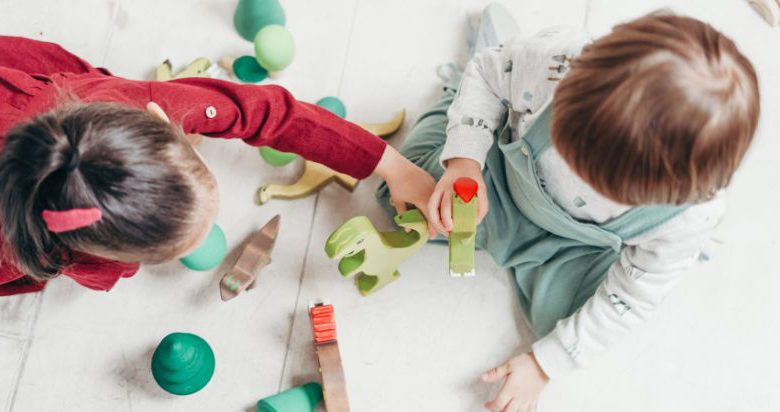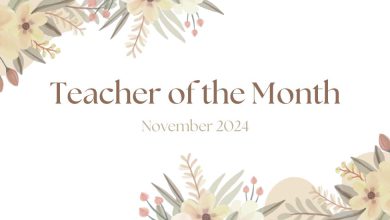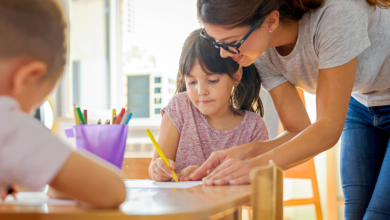Everything There Is to Know About The Reggio Emilia Approach to Learning

Everything There Is to Know About The Reggio Emilia Approach to Learning
If you have been around our blog, school campuses, or social media pages, you likely will have noticed our love for the Reggio Emilia Approach to learning. We have based our program on this emergent curriculum, and the results are excellent. While we love this approach, we are also aware that not everyone is familiar with Reggio Emilia, so we wanted to share a brief overview of what it is all about! This post will cover the origin story, key figures, and how it is implemented in the classroom. You will likely find yourself in love with this way of preschool learning as we are when we are through!
Who Is Reggio Emilia?
You may be surprised that Reggio Emilia is not a “who” but a “where.” This approach is not named after a person at all, but the city of origin in Northern Italy called Reggio Emilia. Several educators in the region began working on this approach after World War II, led by teacher and psychologist Loris Malaguzzi.
Loris Malaguzzi was the brains behind the innovative Reggio Emilia approach to early childhood education. Born in Italy in 1920, he believed that kids are like sponges, soaking up knowledge and creativity. He was all about creating a learning environment where children are the real VIPs, actively exploring and learning through projects that spark their curiosity.
Malaguzzi thought that the classroom should be a buzzing hive of collaboration, with teachers as guides and kids as the stars of their own learning show. His ideas have left a lasting impact, making preschool a place where little minds can shine bright.
“The Hundred Languages Of Children”
The term “The Hundred Languages of the Child” was popularized by Loris Malaguzzi and is a key concept in Reggio Emilia’s approach to early childhood education. This phrase refers to the idea that children have many different ways or “languages” through which they can express themselves and learn. It emphasizes the diverse and varied ways in which children can communicate, explore, and make sense of the world around them.
The idea is that children are not limited to expressing themselves solely through traditional verbal language. Instead, they have numerous ways of representing their thoughts, ideas, and understanding. These “languages” include art, music, movement, drama, writing, and more.
7 Characteristics Of The Reggio Emilia Approach
What sets Reggio Emilia apart from all of the other curriculums? The seven characteristics. These values are reflected in every classroom and school that are centered around this learning style and what plays an essential role in building up amazing students.
- Child-Centered: The approach strongly emphasizes the child as an active participant in their own learning. It recognizes children as competent, capable, and full of potential.
- Emergent Curriculum: Rather than following a predetermined curriculum, the Reggio Emilia approach encourages an emergent curriculum. The curriculum is based on the interests and questions of the children, allowing for a more flexible and responsive learning experience.
- Project-Based Learning: Learning is often organized around projects that emerge from the interests of the children. These projects are in-depth explorations that integrate various subjects and are guided by the children’s curiosity.
- Role of the Teacher: Teachers in the Reggio Emilia approach are seen as collaborators and facilitators rather than just instructors. They observe, document, and engage in dialogue with the children to better understand and support their learning.
- Documentation: The learning process is documented through various means, such as photographs, transcripts, and displays. This documentation serves multiple purposes, including making learning visible, involving parents, and helping educators reflect on their teaching practices.
- Environments as the Third Teacher: The learning environment is considered a crucial element in the educational process. Classrooms are designed to be inviting, aesthetically pleasing, and filled with open-ended materials that encourage exploration and creativity.
- Community Involvement: The Reggio Emilia approach values the involvement of parents and the broader community in the education of children. Parents are considered partners in their child’s learning journey.
When put into practice, educators following the Reggio Emilia approach create environments that provide kiddos with a wide range of materials and opportunities to engage in various forms of expression. These principles highlight the importance of recognizing and respecting the different ways in which children naturally communicate and learn, fostering a holistic approach to education that values creativity and individual expression.
Reggio Emilia Vs. Montessori
While both the Reggio Emilia approach and Montessori education share some similarities, such as a focus on child-centered learning and the importance of the learning environment, there are also significant differences between the two approaches. One major difference lies in their philosophical foundations and the role of the teacher.
In the Reggio Emilia approach:
Teachers are seen as collaborators and facilitators. They observe, document, and engage in dialogue with the children to understand their interests and guide their learning. Teachers play a crucial role in co-constructing knowledge with the children.
In Montessori education:
The Montessori approach places a strong emphasis on the role of the teacher as an observer and guide. However, the teacher in a Montessori classroom is often more explicitly involved in directing individual and small-group activities. The Montessori teacher is trained to provide lessons and guide children through a carefully designed set of materials.
While both approaches respect the child’s individuality and emphasize experiential learning, the degree of teacher direction and involvement in the learning process is a notable difference. Reggio Emilia tends to have a more collaborative and fluid approach to teaching, while Montessori often involves more structured lessons and individualized work.
If this still feels confusing, here is an example!
Reggio Emilia Approach:
Imagine a group of preschool children who have shown an interest in exploring plants and nature. In a Reggio Emilia classroom, the teacher might start by discussing the children’s observations and questions about plants. The teacher could then facilitate a collaborative project where children are involved in planting a small garden in the school’s outdoor area.
The teacher acts as a collaborator, helping children gather materials, discussing the needs of plants, and encouraging them to express their ideas through drawings or discussions. The focus is on the process of exploration and discovery, and the project might evolve based on the children’s interests and questions. The teacher documents the project through photos, notes, and children’s work, making the learning visible.
Montessori Approach:
In a Montessori classroom, if children show an interest in plants, the teacher might introduce a structured lesson on gardening. The teacher could present a lesson on the parts of a plant, demonstrate how to care for plants, and provide specific materials for individual exploration, such as puzzles or activities related to plant anatomy.
Children in a Montessori setting have more direct access to specific materials designed to teach specific concepts. The teacher’s role is to guide individual or small group activities, provide lessons, and ensure children use the materials appropriately. While there is still an element of child choice, the overall structure and focus on individualized learning are distinctive features.
You will notice, the Reggio Emilia approach often involves more collaborative and open-ended group projects, with the teacher as a facilitator. In contrast, the Montessori approach often includes more structured, individualized lessons with the teacher taking a more directive role in guiding children’s learning.
Long-Term Impacts
While the lasting impacts of this innovative approach are still being researched, we are seeing some awesome first-hand results from our students. Granted, we are only speaking of the results seen from our schools, and the best results are shown in students where the families are also invested in this learning style! You have to take into consideration the implementation of the approach when considering the lasting impact.
We have seen strong social and emotional development in our kiddos at Little Sunshine’s Playhouse and Preschool. Our teachers love graduating their students with noticeably strong interpersonal skills, empathy, and a sense of community.
Creativity and innovation, lifelong positive learning attitudes, excellent communication skills, and a drive for community engagement are other qualities we have seen amongst our students who have thrived in this environment.
Final Thoughts
Hopefully this post has answered all of your questions regarding the Reggio Emilia approach. We have covered everything from the story of origin, the core principles, and the lasting impacts it has on children today. If you are looking to enroll your child in preschool any time soon, we highly encourage you to check out the Reggio Emilia approach. You may find that an approach that encourages a love for learning and curiosity is exactly what you are looking for.





